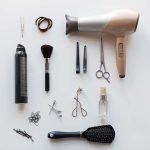As you are likely aware, running is an effective stress reliever. After a long, hard day, there might be nothing more invigorating than lacing up your shoes to run outdoors or on a treadmill.
However, general stress can cause your muscles to contract, which can inhibit your performance and increase your risk of injury. Also, you must alleviate any aches or tension in the body caused by a previous day of running to ensure you are bursting with energy the next time around.
Support the healing process by learning how to reduce muscle tension and de-stress between runs.
Massage Your Body
Many massage options are available to help runners ease tension in the body. For example, many find it beneficial to massage the neck, calves, thighs, soles of the feet, and the bottom of the back.
Learn about the benefits of different professional massage options to ensure you find the best option for you. For instance, a head massage is known for reducing stress and tension in the body, which could make you feel lighter and more energetic during a run.
Alternatively, you could enjoy a tantric massage from Secret Tantric to experience more exciting sensations that will get your blood pumping and heart racing. By doing so, you could banish pent-up stress in your body and feel more focused the next time you hit a treadmill or running path.
Stretch and Breathe Every Morning
Stretching is a must-do each morning and after a run. It will elongate the muscle fibers, preventing muscle contraction while supporting blood circulation. Once you have stretched your body, perform deep breathing exercises to relax your diaphragm, as it is a culprit of much bodily tension.
Stop Sweating the Small Stuff
It is easy to feel angry when a driver cuts you off on the road or you are stuck in endless traffic, but no amount of road rage will stop the frustration you feel inside. It will only add to your rising stress and cause tension to build in the body.
Feel as light as a feather during a run by learning not to sweat the small stuff. You will experience little annoyances throughout the day, but it is how you respond to them that will determine if you feel loose and flexible or tense and stressed.
Listen to Your Body
You must listen to your body during each run to prevent muscular tension from forming. For example, if you feel more fatigued than usual or a pain is becoming increasingly uncomfortable, it is often wise to cut a run short to prevent unnecessary tension or an overuse injury. If in doubt, stop a run, take a seat, and consider if you can safely continue. If your body feels tired, tense, and stressed, you might need another rest day to fully recover. If you attempt to run through cramps, pain, or aches, you can trust you will miss your personal best and may even set yourself back. In the worst-case scenario, you could end up with a serious injury that is difficult to recover from.
















